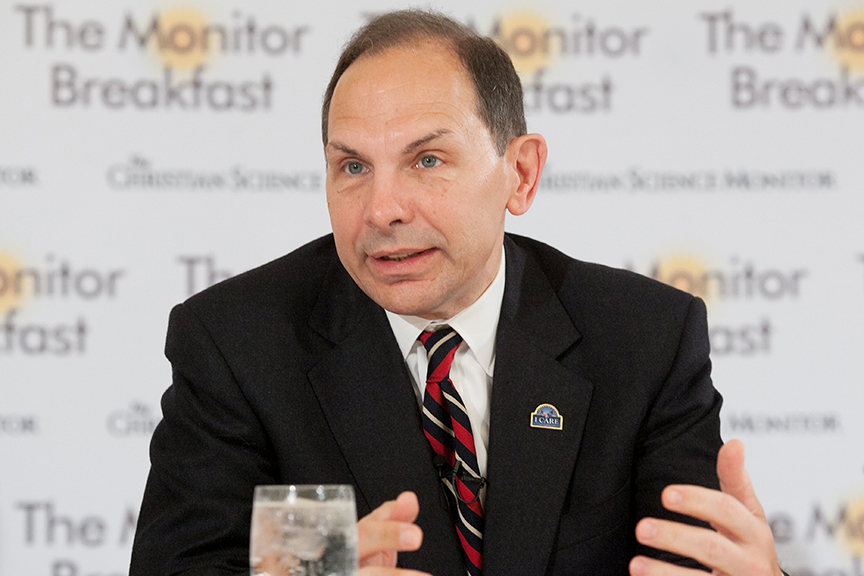
Former Procter & Gamble chief executive Bob McDonald showed over the past week that he has learned a lot about rolling out a new product. On Monday—the eve of Veterans Day—the new secretary at the Department of Veterans Affairs unveiled what he called the largest restructuring in VA history, aimed at cutting delays for veterans seeking medical care that forced out his predecessor in May.
In a slow rollout that featured a Road to Veterans Day Action Review, and interviews on 60 Minutes and with print reporters, McDonald showed the marketing savvy he acquired as a 33-year veteran of P&G. But actually turning around the huge agency and its 300,000 workers will prove harder than heralding the fact that it’s happening.
Scandal enveloped the VA earlier this year after whistleblowers reported that as many as 40 veterans died while awaiting care at the VA hospital in Phoenix. Although investigators said they couldn’t prove that the delays were what caused the deaths, the resulting probes revealed a widespread effort by some in the VA to manipulate record-keeping to make delays appear shorter than they actually were. McDonald has said he has proposed disciplinary action for about 40 employees stemming from the scheduling scandal, and that as many as 1,000 more could face punishment as probes into their actions wrap up.
The systemic nature of the problem led to Shinseki’s ouster. McDonald took over in July.
“As VA moves forward, we will judge the success of all our efforts against a single metric—the outcomes we provide for Veterans,” he said in a status report he released last week. “The mission is to care for Veterans, so we must become more focused on Veteran needs.” But, in a message to VA workers on Monday, he conceded the retooling is a “long-term process” and that “we don’t have the all the answers right now.”
McDonald said he is making four major changes designed to simplify a veteran’s visit to the VA and make the organization more responsive to vets’ needs:
McDonald has won plaudits from insiders for his business acumen, his willingness to give out his cell phone number to pretty much anyone, and for encouraging VA employees to call him “Bob.”
But even if 99% of the VA’s employees act properly, that could still leave 3,000 potential troublemakers. The challenge he faces is the same that brought down the prior VA secretary, retired Army general Eric Shinseki. Like McDonald, Shinseki was a veteran. But Shinseki also had been wounded in Vietnam, treated in VA facilities, and had run a major governmental organization—the U.S. Army—before taking the reins at the VA when President Obama took office.
If the VA bureaucracy stumped someone like Shinseki, how confident is McDonald that it won’t do the same to him? “When you’ve run an $85 billion company in 200 countries around the world and you speak multiple languages and you’ve operated in those countries and you’ve traveled to 41 different sites,” McDonald said, “it’s pretty hard to hide stuff.”
More Must-Reads from TIME
- Cybersecurity Experts Are Sounding the Alarm on DOGE
- Meet the 2025 Women of the Year
- The Harsh Truth About Disability Inclusion
- Why Do More Young Adults Have Cancer?
- Colman Domingo Leads With Radical Love
- How to Get Better at Doing Things Alone
- Michelle Zauner Stares Down the Darkness
Contact us at letters@time.com